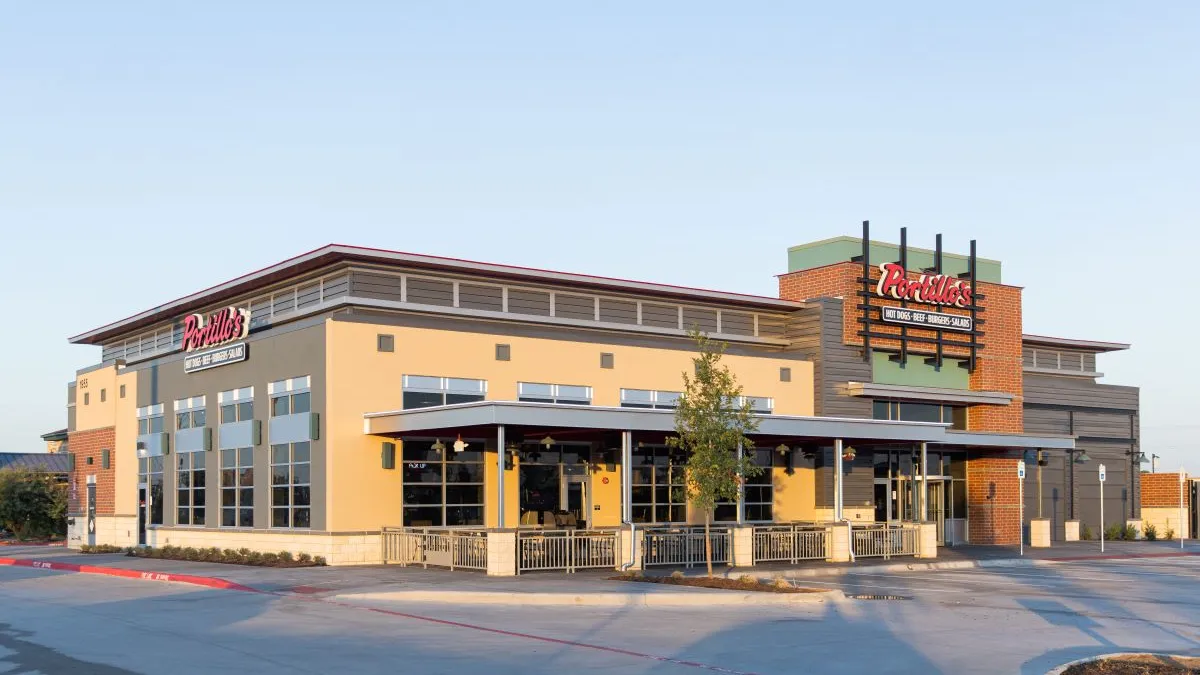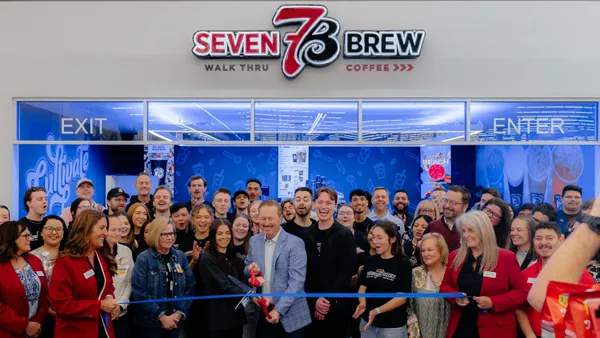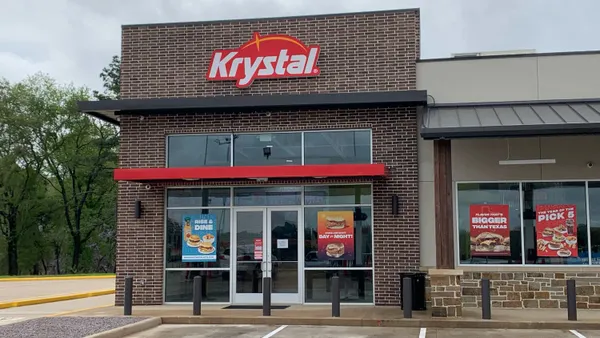Dive Brief:
- Portillo’s, which has 77 full-scale restaurants in 10 states, increased the minimum number of stores it estimates it can open from 600 to 920, the company wrote in an email to Restaurant Dive.
- This estimated target store count includes 800 full-sized restaurants and 120 pickup units, walk-up stores for urban areas and other alternative restaurant formats, such as locations on college campuses.
- Portillo’s updated its growth rate target from 10% annually to between 12% and 15% by 2026, an acceleration made possible by its lower cost, smaller builds under its Restaurant of the Future design.
Dive Insight:
Portillo’s new restaurant openings remain strong this year, Portillo’s CEO Michael Osanloo noted during an August earnings call. As of the second quarter, the company is working on three restaurants in the Dallas-Fort Worth market, three in Greater Chicago, one unit in Arizona and another in Central Florida. One of the Dallas restaurants has already opened, marking the chain’s first location in Texas, with the remainder to open by the end of the year, the company said in a statement. Portillo’s said it is planning to expand into Nevada, Georgia and Colorado in the near term.
The company’s newest restaurant in Allen, Texas, is 7,700 square feet and has a 65-foot production line. By comparison, a full-scale unit in Roseville, Minnesota is 11,300 square feet with a 105-foot production line, the company said. The company plans to go even smaller with its Restaurant of the Future, which will average between 5,500 to 6,000 square feet with a 47-foot production line. On Tuesday during its investor day, Portillo’s told investors believes it can maintain average unit volumes of $10 million to $12 million at these smaller units.
The first part of this design shift is retrofitting 40 existing restaurants to simplify and modernize its existing base, Nicholas Scarpino, SVP of marketing and off-premise dining, said Tuesday during the company's investors day.
“We see future growth in the off-premise channels especially, but we're not abandoning dine-in by any means, we're reinvesting in it,” Scarpino said.

The retrofits include one production line instead of two, replacing the space where the second production line was with a grab-and-go area that will have things like beverages and desserts, which represent 24% in incremental sales growth in dine-in, according to Scarpino.
“Instead of having to order beer at a third area of our restaurant, you can now do it all upfront from one area,” Scarpino said.
The design also takes the beverage station and puts it in the dining room for guests to serve themselves, in contrast to chains like McDonald’s, which is removing self-serve beverage stations in the near future.
The next stage of Portillo’s redesign is building a more efficient kitchen, dubbed Kitchen 23, in its 2023 and 2024 new builds, which Scarpino described as a bridge between present designs and the Restaurant of the Future. This design repositions equipment, shifts the drive-thru door and shortens the production line. The chain lowered equipment costs by $100,000, Scarpino said.
Building on its retrofits and new kitchen design, Portillo’s intends for its openings from 2025 on feature the full Restaurant of the Future layout. The smaller design will reduce its staffing needs to between 27 and 32 workers during peak volumes, in contrast to the Kitchen 23 design which requires up to 34 employees, Scarpino said. Indoor and outdoor seating will be reduced to between 140 to 170 seats compared to 210 in the Kitchen 23 design.














